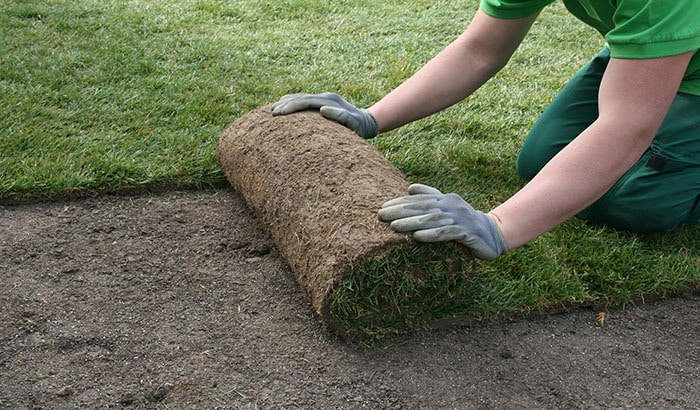With fall’s cool weather approaching, it’s a good time to aerate your lawn. After a hot summer, you could use a breather, and so could your grass!
Read on for tips on the best time to take care of this landscaping chore.
What is Aeration?
As the word implies, aerating is the process of introducing air into something, in this case, your lawn. This is usually accomplished by using some kind of spike or core to puncture the ground and create space for air. You can do this manually, by using a hand aerator or a spading fork, or mechanically, by using a core aerator machine. You have the option of buying or renting an aerator or hiring a lawn service to do the aeration for you.
Why Aerate Your Lawn?
Many parts of Utah have compacted clay soil, which makes it difficult for grass to grow deep roots. One way to tell if your soil might be compacted is to try and push a screwdriver into the soil. If this is difficult to do, even with moist soil, your lawn might benefit from aerating. Grass needs air and can drown with too little air and too much water, as can happen with hard clay soil.
Over time, your lawn will develop thatch, which is a layer of thick, matted roots and dead grass. When the layer of thatch becomes too thick, it becomes difficult for water to penetrate down to the roots, and fertilizer will also remain on the surface. By aerating, thatch is broken up, and pockets are created in the soil, allowing water, nutrients, and air to reach the roots. The holes left behind from aerating will quickly fill in as roots deepen and expand, and the soil will loosen and have a better texture.
When is the Best Time to Aerate?
Cool-season grass, such as Kentucky Bluegrass, does best with aerating in the spring and the fall. The weather is cooler at these times of the year, but they still fall within the grass’s growing season. Aerating during the growing season allows grass to fill in the holes left behind and to deepen the root system. An advantage of aerating in the fall is the plugs left behind have plenty of time to break down and disappear into the lawn over the winter. The plugs contain many beneficial microorganisms and nutrients that you want to leave in your grass for better lawn health.
After aerating, it’s also a great time to feed your lawn with fertilizer, which will be able to reach further down into the soil with the aeration holes. If you’re aerating in the fall, you can also overseed any patchy areas without worrying about the pressure of weeds. Most lawns only need to be aerated every 1 to 3 years, depending on the level of traffic and soil compaction.
Monarch Sod Can Help
With high temperatures dying down, you may be planning to aerate your lawn or patch it up after the long, hot summer we’ve had along the Wasatch Front. Monarch Sod provides high-quality Kentucky Bluegrass and other drought-resistant sod. Whether you live in Utah County or as far north as Bountiful, give us a call and let our installation crew do the work for you! var /*99586587347*/











